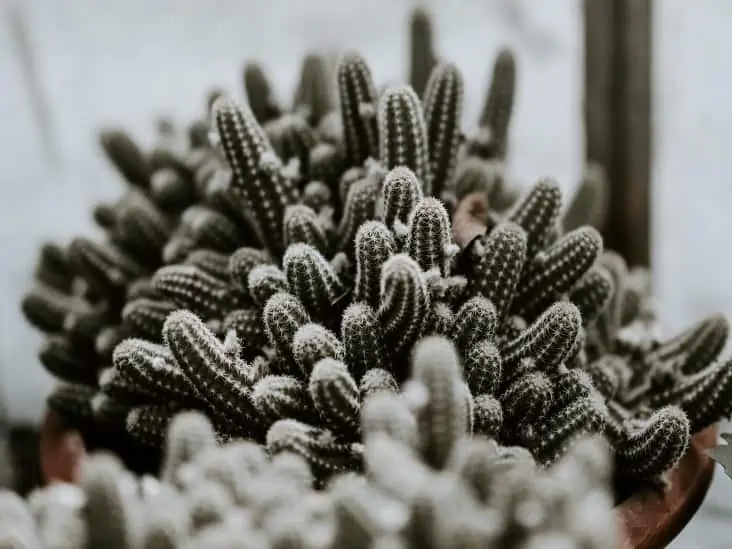When envisioning a desert landscape, one might picture cacti basking under relentless sun. However, many might not realize that certain species exhibit remarkable resilience against winter’s chill. The world of cacti is not solely reserved for hot climates; some species have evolved to withstand frigid temperatures and harsh conditions, making them not only fascinating but also aesthetically pleasing additions to winter gardens and homes.
Understanding which cacti can survive winter is essential for enthusiasts wishing to diversify their plant collections or for those simply seeking to create a striking winter display. Let’s explore some of the most notable cold-tolerant cactus species, their unique characteristics, and their aesthetic appeal.
A plethora of characteristics can render a cactus suitable for cold climates. Adaptations such as specialized tissues for moisture retention, thick skins for insulation, and unique morphology all contribute to their survival. Beyond just survival, these species often offer extraordinary visual allure, captivating plant lovers throughout the seasons.
Here are some of the best cold-tolerant cactus species that bring both resilience and beauty to winter landscapes.
Opuntia Fragilis: The Hardy Prickly Pear
Opuntia fragilis, more commonly known as the fragile prickly pear, is a remarkable example of a cold-tolerant cactus that flourishes in temperatures as low as -30°F (-34°C). This species thrives in the central United States and parts of Canada, showcasing a stunning adaptation to the cold.
What sets Opuntia fragilis apart is not merely its hardiness but also its enchanting visual appeal. The cactus features an intriguing segmented structure, designed to minimize water loss and withstand freezing temperatures. Each pad can exhibit hues ranging from deep green to vibrant yellow, blooming ephemeral flowers in the spring that can be pink, red, or yellow, adding a captivating splash of color against winter’s stark backdrop.
Moreover, this cactus’s compact form makes it an excellent choice for rock gardens or containers, promising a delightful focal point even in the coldest months. With its delicate yet resilient exterior, Opuntia fragilis embraces the winter aesthetically and ecologically.
Escobaria: The Resilient Escobaria
Escobaria is a genus of small but mighty cacti native to North America, known for their impressive frost resistance and charming rounded forms. These cacti typically feature spiky, rounded clusters with mesmerizing flowers that bloom in an array of colors, ranging from bright pinks to creamy whites.
One particular species, Escobaria vivipara, is renowned for its ability to endure winters as harsh as -30°F (-34°C). This resilience is complemented by its unique reproduction method; it often produces offsets that create visually stunning clusters. Such formations can create a plush, soft appearance, an inviting quality that contrasts with the harshness of winter.
In addition, the textured appearance of Escobaria species adds depth and interest to any winter arrangement. Whether used in xeriscapes or decorative pots, Escobaria cacti can serve as eye-catching elements throughout the entire winter season.
Brauchtia: The Low-Profile Wonder
Brauchtia is not as widely recognized yet offers a peculiar charm that is both captivating and cold-resistant. This genus includes species that can endure frigid winter temperatures while providing visual intrigue with their thick, tuberous bodies that store water and nutrients.
One of the extraordinary aspects of Brauchtia is how its growth pattern contributes to its winter survival. These cacti can effectively reduce their surface area, thus minimizing water loss and improving their capacity to survive severe weather conditions. The result is a resilient species that can thrive even in winter landscapes.
The uniqueness of Brauchtia wear are its vivid colors; some species display blooms that transform from muted greens to striking reds or oranges as they prepare for spring. These transformations can create a stunning visual effect, making them local stars in gardens as they awaken from winter dormancy. The juxtaposition of their resilient, rugged appearance and vibrant colorations garners admiration.
Conclusion: Embracing the Resilience and Beauty of Winter
Cold-tolerant cacti, such as Opuntia fragilis, Escobaria, and Brauchtia, not only survive winter but fascinate with their resilience and beauty. Each species brings a unique charm, from the delicate blooms of the fragile prickly pear to the compact elegance of Escobaria. The visual and textural diversity among these hardy plants offers endless opportunity for creative arrangements that draw the eye and enrich winter landscapes.
Incorporating these species into your garden not only enhances its aesthetic appeal but also serves as a testament to the astonishing adaptability of nature. When choosing plants that thrive in winter, exploring the world of cold-tolerant cacti offers the promise of resilience and beauty, ensuring that your green space remains lively even when snow blankets the ground.





Leave a Comment